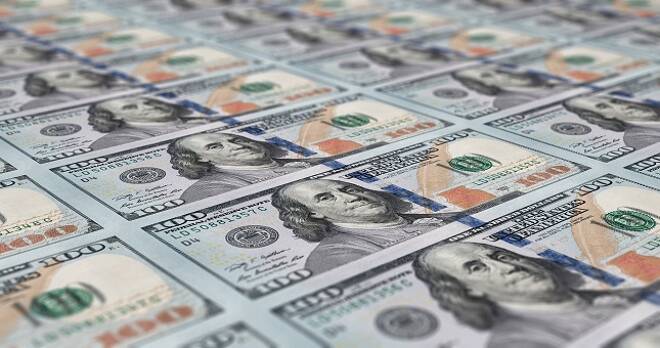Advertisement
Advertisement
U.S. Dollar Index (DX) Futures Technical Analysis – 89.790 Next Target; Trend Down, but Ripe for Reversal
By:
The U.S. fiscal stimulus package has been priced into the market, so once announced, it could turn into a “sell the rumor, buy the fact” event.
The U.S. Dollar posted a two-sided trade against a basket of currencies before settling lower on Wednesday after the Federal Reserve disappointed investors expecting a shift toward more purchases of longer-dated bonds. In other words, central bank policymakers were less-dovish that anticipated ahead of the Fed’s announcement.
At 22:00 GMT, March U.S. Dollar Index futures settled at 90.205, down 0.204 or -0.23%.
The U.S. Dollar Index rose sharply after the Fed’s rate-setting committee on Wednesday said its monthly government bond purchase program will continue until the economy substantially improves. But the dollar soon gave back the increase, again hovering near a two-year low.
Daily Swing Chart Technical Analysis
The main trend is down according to the daily swing chart. The downtrend was reaffirmed on Wednesday sellers took out the recent low at 90.380. The main trend will change to up on a move through 92.730.
The minor trend is also down. A trade through 91.150 will change the minor trend to up. This will also shift momentum to the upside.
The new minor range is 91.150 to 90.045. Its 50% level at 90.600 is resistance.
Daily Swing Chart Technical Forecast
Taking out 90.045 will indicate the presence of sellers. If this creates enough downside momentum then look for the selling to possibly extend into the July 7, 2018 main bottom at 89.790.
In order to generate any kind of upside momentum, the index is going to have to form a closing price reversal bottom and confirm the chart pattern, or overcome the 50% level at 90.600 or take out the minor top at 91.150.
Side Notes
I think the U.S. fiscal stimulus package has been priced into the market, so once announced, it could turn into a “sell the rumor, buy the fact” event. This would be the kind of news that could trigger a closing price reversal bottom.
For a look at all of today’s economic events, check out our economic calendar.
About the Author
James Hyerczykauthor
James Hyerczyk is a U.S. based seasoned technical analyst and educator with over 40 years of experience in market analysis and trading, specializing in chart patterns and price movement. He is the author of two books on technical analysis and has a background in both futures and stock markets.
Advertisement
